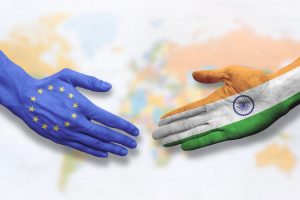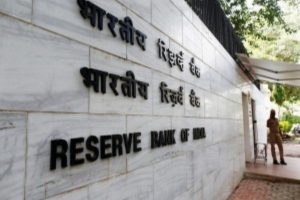“From Kashmir to Kanyakumari” goes the saying. Literally, it denotes a route that stretches from India’s northernmost tip high in the cold, snowy mountains all the way down to its southernmost point, the sunny confluence where three seas, including, of course, an ocean, flow into each other. Figuratively, the phrase has always been used to suggest a kind of comprehensiveness.
So when Rahul Gandhi decided to embark on a journey of this 4,000-kilometre-long stretch, that too on foot, less than two years before the general elections, clearly he was making a point. The Congress leader, who has been mercilessly mocked by detractors as a “Pappu” or “simpleton” who lacked the maturity to lead India’s oldest political party, far less the country, in spite of being the great grandson of Jawaharlal Nehru, the grandson of Indira Gandhi, and the son of Rajiv Gandhi, was making a point that he would walk through every nook and cranny of this land armed with nothing but this simplicity and this humility. He would reach out to the common people of this land, who too were essentially simple and humble, and hear their stories.
Advertisement
And if the authors of the new book, “Bharat Jodo Yatra: Rahul Gandhi’s Epic March,” published by Harpar Collins this year, are to be believed, he came out a winner, with hundreds and thousands of people thronging the sidelines of the route through which he passed, arriving from different parts of the country, over and above the hundreds and thousands of people, party leaders and cadres, civil society groups, and others who registered to be a part of the “pilgrimage.”
Edited by Pushparaj Deshpande and Ruchira Chaturvedi and with a foreword by Congress president Mallikarjun Kharge, the book is a compilation of over thirty short and, needless to say, sweet essays, all written by people who took part in the journey, either having covered the entire stretch along with Rahul or having walked part of the way. It begins with a piece from Rahul himself.
“Last year, I spent 145 days walking across the land I call home,” he writes. “I started at the edge of the sea (in Kanyakumari) and walked through heat, dust and rain, through forest, hills and towns, until I reached the soft snow of my beloved Kashmir. Many people along the way asked me, Why are you doing this? Even today, they ask: Why? What were you looking for? What did you find?
I wanted to understand the thing I loved. The thing for which I was ready to give up everything, including my life. The thing that could make me take so much pain and abuse for so many years. I wanted to know precisely what it was that I loved. Was it this land? The Mountains? The Sea? Was it a person? Was it people or a set of ideas? But there was something else. I also wanted to find out what sort of heart was mine that I allowed it to be captured in this way.”
From Rahul Gandhi’s essay, we learn that he was used to running eight to ten kilometres per day since his childhood, so he did not think that walking 25 kilometres per day, which is the distance he would have to cover in order to finish the journey within the stipulated time, would pose difficulties. However, when the journey actually took off on 7 September 2022, within a few days, an old knee injury reared its ugly head.
He remembered the pain. He remembered being in tears as he sat alone in his makeshift “container” accommodation and thought, “How was I ever going to walk nearly 4,000 kilometers?” Not afraid to expose his own vulnerability, his essay is reflective of honesty, which is refreshing in a politician, a clan increasingly associated with doublespeak. Not only did he complete the journey, he addressed hundreds of meetings along the way, spoke to thousands of people who visited him, sometimes one-on-one, sometimes in groups, and picked up hundreds and thousands of followers. The authors of the book called this journey a spiritual pilgrimage, in which the main message was to carry “love” everywhere. Indeed, nothing else can explain this almost miraculous achievement.
Though ostensibly about a journey, the essays in this book actually recreate a heartwarming image of the man named Rahul Gandhi, who has emerged in the avatar of an ideal leader, who has eschewed the arrogance of being a leader, and who is without greed for power or need for position.
The authors reiterate time and again that this was not an election-related roadshow or a cross-country campaign for votes. In fact, in his essay, Professor Ajay Gudavarthy delineates the need for political leaders to practice selfless service for the people long before the idea of power or winning elections ought to enter their thoughts. Calling current electoral politics exactly the opposite, the other essayists point out that Rahul has emerged as the leader who is free of the agenda of a single-minded pursuit of power at any cost.
In his essay, Darshan Mondkar asks Rahul what his thoughts are if he does happen to get votes as a result of such selfless pilgrimages of love. Rahul replies, “That is not the reason why I am walking, but if yes, why not?” The idea is that for a leader to govern well, he would need to know his people first.”
While the essays are overwhelmingly about Rahul, which often becomes repetitive with all the authors penning their thoughts and observations about this honest, disarmingly down-to-earth and simple man, who is full of depth and is devoid of the arrogance that has been attributed to him, and who is the ideal leader material, the stories are also fascinating narratives detailing side stories from the journey and even the logistical arrangements that had to be made for such an arduous, not to mention mobile, journey. Often, these descriptions are humorous. I especially enjoyed Professor Mukulika Banerjee’s account of her experience:
“I spent two days and two nights with the Yatra, and the journey began as soon as I alighted at the Sawai Madhopur train station. A young doctor, one of the young Yatris, had come to town to collect medicine which was needed at the camp but was stranded and needed to get back to the camp about twenty kilometers away. As I chatted during the lift I was able to offer him, I had asked him the many questions I arrived with.” While most of these admittedly pertained to the philosophical, ideological and intellectual, her comic timing in switching to the observations in the mobile washrooms was hilarious. “The food was rather excellent (perhaps to maintain morale), but the sorry state of the washrooms was dampener. It made for a reliable conversation starter, though, and sociological explanations abounded, including the plausible one that too many were ‘Western style’ which hundreds of Yatris had never encountered before and did not know how to use.”
Several of the authors claim in their essays that there was a deliberate media blackout and the Yatra was not given its due coverage in the national media, though social media and local media in the states had a deluge of stories and videos.
However, considering that (as it comes through from reading this book), Rahul Gandhi’s aim was to spread and receive love—a truly touching thought and a reassuring one in a possible future leader—he achieved it.
Whether the electoral impact of the Bharat Jodo Yatra would be reflected in the results of the Parliamentary Elections on 4 June is the subject of another book.











